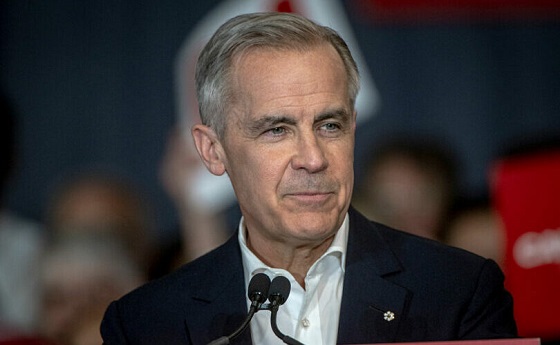Business
Planet Fitness says ‘discomfort’ not a reason to ban ‘transgender’ men from women’s locker rooms

From LifeSiteNews
The company’s stock plummeted after it terminated a member who exposed a man shaving in a woman’s locker room in front of a girl estimated to be around 12 years old.
Popular exercise chain Planet Fitness is doubling down on its prioritization of “gender identity” over female customers’ welfare, putting in writing that “discomfort” over sharing intimate facilities with the opposite sex should not be accommodated.
Planet Fitness, which for years has allowed gender-confused men in women’s locker rooms, came back in the news this month when an Alaskan Planet Fitness member named Patricia Silva shared online a video she took of a man who “identifies” as a woman shaving in a women’s locker room. She said that at the time of the incident, a girl estimated to be 12 years old was sitting in a corner, wrapped in a towel, and “freaked out” by having an adult male in her changing area.
In accordance with the company’s woke priorities, however, instead of removing the man, Planet Fitness revoked Silva’s membership, citing her violation of a policy against photographing other gym members.
“So, I would like for you women to stand up and have a voice and stop these shenanigans,” Silva said. “You have authority! Use your authority.”
Since the story broke, Planet Fitness’s stock price has dropped from $66.92 on March 7 to $56.46 on March 19. “The chain saw a $400 million dive in valuation from $5.3 billion to $4.9 billion,” Fox Business reported Thursday.
But the company is digging in its heels.
Chief corporate affairs officer McCall Gosselin told the Christian Post that the policy is part of the company’s vision of an “inclusive environment,” and that its “gender identity non-discrimination policy states that members and guests may use the gym facilities that best align with their sincere, self-reported gender identity.” The company also said that members claiming trans status may only be asked to leave “if it is confirmed that a member is acting in bad faith” and is not sincerely gender confused.
Libs of TikTok also shared a page from Planet Fitness’s operations manual, which states that “Some members may feel uncomfortable with a transgender member using the same locker room facilities, bathrooms, showers, or other facilities/programs separated by sex,” but “this discomfort is not a reason to deny access to the transgender members.” It calls on staff to resolve such situations by attempting to “foster a climate of understanding,” i.e., transgender accommodation.
The company “reserves the right to terminate a person’s membership immediately for any violation of this policy,” which also requires staff (but not explicitly members) to honor preferred names and gender pronouns.
WOW. Planet Fitness is standing by their decision to allow men in women's locker rooms.
Their policies actually allow males in female spaces. They instruct women to just deal with their discomfort and make sure not to misgender the trans person in their locker room.… https://t.co/1fA52PY21Q pic.twitter.com/wl5ZCxMtVs
— Libs of TikTok (@libsoftiktok) March 15, 2024
Conservatives have long argued that forcing girls to share intimate facilities such as bathrooms, showers, or changing areas with members of the opposite sex violates their privacy rights, subjects them to needless emotional stress, and gives potential male predators a viable pretext to enter female bathrooms or lockers by simply claiming transgender status. (Planet Fitness ostensibly accounts for the last danger by reserving the right to eject men who are only faking gender confusion, but in practice such a policy is unlikely to be enforced for fear of being branded “intolerant” and the difficulty of proving what may be going on in someone’s mind.)
The harm has been highlighted by University of Pennsylvania swimmer William “Lia” Thomas, who reportedly retains male genitalia and is still attracted to women yet “identifies” as female and lesbian, causing his female teammates unrest due to sharing lockers with them; and by Loudoun County Public Schools in Virginia, where a female student was raped by a “transgender” classmate in a girls bathroom.
Business
Trump demands free passage for American ships through Panama, Suez

 MxM News
MxM News
Quick Hit:
President Donald Trump is pushing for U.S. ships to transit the Panama and Suez canals without paying tolls, arguing the waterways would not exist without America.
Key Details:
-
In a Saturday Truth Social post, Trump said, “American Ships, both Military and Commercial, should be allowed to travel, free of charge, through the Panama and Suez Canals! Those Canals would not exist without the United States of America.”
-
Trump directed Secretary of State Marco Rubio to “immediately take care of, and memorialize” the issue, signaling a potential new diplomatic initiative with Panama and Egypt.
-
The Panama Canal generated about $3.3 billion in toll revenue in fiscal 2023, while the Suez Canal posted a record $9.4 billion. U.S. vessels account for roughly 70% of Panama Canal traffic, according to government figures.
Diving Deeper:
President Donald Trump is pressing for American ships to receive free passage through two of the world’s most critical shipping lanes—the Panama and Suez canals—a move he argues would recognize the United States’ historic role in making both waterways possible. In a post shared Saturday on Truth Social, Trump wrote, “American Ships, both Military and Commercial, should be allowed to travel, free of charge, through the Panama and Suez Canals! Those Canals would not exist without the United States of America.”
— Rapid Response 47 (@RapidResponse47) April 26, 2025
Trump added that he has instructed Secretary of State Marco Rubio to “immediately take care of, and memorialize” the situation. His comments, first reported by FactSet, come as U.S. companies face rising shipping costs, with tolls for major vessels ranging from $200,000 to over $500,000 per Panama Canal crossing, based on canal authority schedules.
The Suez Canal, operated by Egypt, reportedly saw record revenues of $9.4 billion in 2023, largely driven by American and European shipping amid ongoing Red Sea instability. After a surge in attacks by Houthi militants on commercial ships earlier this year, Trump authorized a sustained military campaign targeting missile and drone sites in northern Yemen. The Pentagon said the strikes were part of an effort to “permanently restore freedom of navigation” for global shipping near the Suez Canal.
Trump has framed the military operations as part of a broader strategy to counter Iranian-backed destabilization efforts across the Middle East.
Meanwhile, in Central America, Trump’s administration is working to counter Chinese influence near the Panama Canal. On April 9th, Defense Secretary Pete Hegseth announced an expanded partnership with Panama to bolster canal security, including a memorandum of understanding allowing U.S. warships and support vessels to move “first and free” through the canal. “The Panama Canal is key terrain that must be secured by Panama, with America, and not China,” Hegseth emphasized during a press conference in Panama City.
American commercial shipping has long depended on the canal, which reduces the shipping route between the U.S. East Coast and Asia by nearly 8,000 miles. About 40% of all U.S. container traffic uses the Panama Canal annually, according to the U.S. Maritime Administration.
The United States originally constructed and controlled the Panama Canal following a monumental effort championed by President Theodore Roosevelt in the early 20th century. After backing Panama’s independence from Colombia in 1903, the U.S. secured the rights to build and operate the canal, which opened in 1914. Although U.S. control ended in 1999 under the Torrijos-Carter Treaties, the canal remains vital to U.S. trade.
2025 Federal Election
Columnist warns Carney Liberals will consider a home equity tax on primary residences

From LifeSiteNews
The Liberals paid a group called Generation Squeeze, led by activist Paul Kershaw, to study how the government could tap into Canadians’ home equity — including their primary residences.
Winnipeg Sun Columnist Kevin Klein is sounding the alarm there is substantial evidence the Carney Liberal Party is considering implementing a home equity tax on Canadians’ primary residences as a potential huge source of funds to bring down the massive national debt their spending created.
Klein wrote in his April 23 column and stated in his accompanying video presentation:
The Canada Mortgage and Housing Corporation (CMHC) — a federal Crown corporation — has investigated the possibility of a home equity tax on more than one occasion, using taxpayer dollars to fund that research. This was not backroom speculation. It was real, documented work.
The Liberals paid a group called Generation Squeeze, led by activist Paul Kershaw, to study how the government could tap into Canadians’ home equity — including their primary residences.
Kershaw, by the way, believes homeowners are “lottery winners” who didn’t earn their wealth but lucked into it. That’s the ideology being advanced to the highest levels of government.
It didn’t stop there. These proposals were presented directly to federal cabinet ministers. That’s on record, and most of those same ministers are now part of Mark Carney’s team as he positions himself as the Liberals’ next leader.
Watch below Klein’s 7-minute, impassionate warning to Canadians about this looming major new tax should the Liberals win Monday’s election.
Klein further adds:
The total home equity held by Canadians is over $4.7 trillion. It’s the largest pool of private wealth in the country. For millions of Canadians — especially baby boomers — it’s the only retirement fund they have. They don’t have big pensions. They have a paid-off house and a hope that it will carry them through their later years. Yet, that’s what Ottawa has quietly been circling.
The Canadian Taxpayer’s Federation has researched this issue and published a report on the alarming amount of new taxation a homeowner equity tax could cost Canadians who sell their homes that have increased in value over the years they have lived in it. It is a shocker!
A Google search on the question, “what is a home equity tax?” returns the response:
A home equity tax, simply put, it’s a proposed levy on the increased value of your home, specifically, on your principal residence. The idea is for Government to raise money by taxing wealth accumulation from rising property values.
The Canadian Taxpayers Federation has provided a Home Equity Tax Calculator Backgrounder to help Canadians understand what the impact of three different types of Home Equity Tax Calculators would have on home owners. The required tax payment resulting from all three is a shocker.
Keep in mind that World Economic Forum policies intend to eventually eliminate all private home ownership and have the state own and control not only all residences, but also eliminate car ownership, and control when and where you may live and travel.
Carney, Trudeau and several other members of the Liberal government in key positions are heavily connected to the WEF.
-

 2025 Federal Election2 days ago
2025 Federal Election2 days agoThe Federal Brief That Should Sink Carney
-

 2025 Federal Election2 days ago
2025 Federal Election2 days agoHow Canada’s Mainstream Media Lost the Public Trust
-

 2025 Federal Election2 days ago
2025 Federal Election2 days agoOttawa Confirms China interfering with 2025 federal election: Beijing Seeks to Block Joe Tay’s Election
-

 Media20 hours ago
Media20 hours agoCBC retracts false claims about residential schools after accusing Rebel News of ‘misinformation’
-

 2025 Federal Election2 days ago
2025 Federal Election2 days agoReal Homes vs. Modular Shoeboxes: The Housing Battle Between Poilievre and Carney
-

 COVID-192 days ago
COVID-192 days agoNearly Half of “COVID-19 Deaths” Were Not Due to COVID-19 – Scientific Reports Journal
-

 John Stossel2 days ago
John Stossel2 days agoClimate Change Myths Part 2: Wildfires, Drought, Rising Sea Level, and Coral Reefs
-

 Bjorn Lomborg19 hours ago
Bjorn Lomborg19 hours agoNet zero’s cost-benefit ratio is CRAZY high


